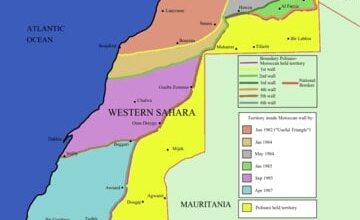
The vicious war in Sudan and its results.
By Ibrahim Ebeid.
MARCH 23, 2024
No one can ignore the war that is taking place in Sudan; it is similar in some faces to the the war on other countries in Libya ,yemen ,Syria ,etc.; the purpose behind it is to destroy this beautiful country, -which was considered the basket of food for the Arab Homeland – and to tear it to several entities .
The tools of war are different than in Palestine. Sadly, the Sudanese are fighting each other , and two big powers are behind it; the Russians benefited from the abundance of gold discovered in Sudan, and the United States wanted to take over or compete with Russia. The lives of the people of Sudanese do not matter to Russia or the United States; they are statistics that do not count toward the gold as more valuable than the lives of the Sudanese. Sawt Oroba English Publication is very concerned about the vicious war in Sudan.
In this article, we’ll let you know the report of The Food and Agriculture Organization on a critically devastated area in Sudan. Agriculture in Sudan fell drastically as a result of the war; this, of course, caused famine and starvation in the country and affected millions of families. We urge the peace-loving people around the World who care about peace and progress to take united state to stop the devastating war in Sudan, to get rid of the warlords, and to establish a civil democratic government to restore peace and progress.
The report showed that Sudan’s cereal production has fallen by “46 percent” from the previous year due to the war in the country.
Sudan needs between 5.5 and 6 million tons of cereals to meet its food needs, as different parts of the country depend on different cereals.
Sudan’s cereal production in 2023, including wheat crops scheduled to be harvested in March, amounted to 4.1 million tons, FAO said, noting that this figure is 46% lower than the previous year and 40% lower than the average of the last 5 years.
The report indicated that sorghum production decreased by “42%”, reaching about three million tons. In contrast, millet production reached about “683” thousand tons, a “64%” decrease from the previous year.
The report predicted that wheat production in the current harvest season will reach about 377,000 tons, a decrease of about 20% from the prior year.
FAO attributed the significant decline in cereal production mainly to the impact of the ongoing conflict on agricultural operations, including insecurity, challenges in providing agricultural inputs, and high prices.





